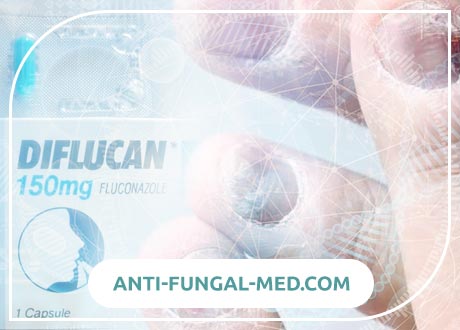
What is Candida Fungus Infection?
Candida fungus infection, also known as candidiasis, is a condition caused by the overgrowth of a strain of fungus called Candida. Our body hosts different types of fungus and bacteria. The problem arises when there is an outgrowth of these fungi.
It affects various parts of the body and results in itchiness, redness or even white patches over the skin. In healthy individuals, who have a strong immune system, it is limited to toenails, skin, fingernails, the genitals (vagina and penis), esophagus etc.
Types of Candida Function Infection
There are several infections caused by Candida fungus in humans. When it affects the mouth it is called Oral Thrush. For the genital area, it is called the vaginal or penile yeast infection. The internal organs are also affected by the Candida fungus are as follows: esophageal tract infection, urinary tract infection, gastrointestinal tract and respiratory tract infection.
Causes of Candida Function Infection?
In individuals who have weaker immune systems, it affects the respiratory, gastrointestinal and urinary tracts.
In infants, one could find Candida to be very common and usually doesn’t last for a prolonged period. However, if it does, then it is a cause for concern.
Candida yeasts thrive on the local area of the body where there is a lot of moisture. Thus, a person wearing wet clothes for long periods may cause candidiasis.

If a person already suffering from other ailments, then there are high chances that candidiasis would afflict that person. Generally, a person having HIV/AIDS, cancer, high stress, diabetes deficiency of particular nutrients etc. are at a higher end of contracting candidiasis or Candida fungus infection.
Esophageal candidiasis, in other words, Candida fungus infection of the food pipe is an occurrence in unhealthy people and is characterised by difficulty and pain while swallowing, vomiting and pain in the abdomen. If left untreated, it can lead to a serious condition called candidemia.
Candida infection is also common and prevalent in healthy individuals. In people with strong immune systems, it is characterised by anal itching, indigestion, diarrhoea, bloating etc. If the Candida enters the gut of a person, it leads to dysbiosis, an imbalance of microbes in the gut.
Let’s analyse in-depth the diagnosis and the characteristics of the most common infections caused by Candida Fungus – genital and oral.
Diagnosis
The symptoms of vaginal candidiasis and bacterial vaginosis are similar and common. It had been found out that in 2002, one-third of the women treating themselves for vaginal fungal yeast infection had it, whereas the rest of the women had bacterial vaginosis or an infection which was mixed in nature, i.e. having more than one microbe as its cause.
The diagnosis of the presence of fungal infection is done either with the help of a microscope or through culture.
In case of culture, the swab containing the infection is rubbed on the infected surface and then incubated at a temperature of 37-degree centigrade. After few days, bacterial or yeast colonies emerge; helping us determine if the infection is caused by Candida fungus or bacteria.
Systematic candidiasis occurs when the Candida fungus enters the bloodstream, affecting one's kidneys, eyes, joints, bones, nervous system, muscles etc. Treatments at this stage and magnitude are intravenous in nature and also oral at times.
The mortality rate in the case of systematic candidiasis is approximately 30-50%.
Penile Candida Fungal Infection in Men:
Men generally do not suffer from a severe form of yeast infection and thus, many a time does not require medical treatment. The yeast subsides on its own over a period of time. Antifungal creams recommended by doctors is generally enough to cure it. However, for cases involving severe fungal yeast infections, fluconazole, an antifungal cream, is generally recommended.
In men, the yeast infections of their genitalia are characterised by the following:
- discharge from the foreskin which is smelly
- rashes and itchiness around the penis
- red colouration in the affected part of the genital
- painful urination
- painful sex
- not having a bath regularly
- using perfumed soaps and chemicals around the genital area
- high intake of antibiotics
The causes for Candida fungal yeast infection among men are as follows:
- sexual encounter with a woman having vaginal fungus infection
- unwashed or dirty undergarments worn over a long period of time
- excessive use of antibiotics
- high sugar levels or diabetes
Also, a diet low in sugar and carbohydrates is essential to prevent fungal infection from taking place.
For men, personal hygiene is also an area which needs to be given due attention to. The build-up of sweat on account of wearing tight underwear is also a cause for the fungal growth in the genital areas of men. Besides that, men should always wash their penises with warm water and dry their bodies thoroughly; as Candida fungus thrives on wet, moist areas of the body.
Vaginal Candida Fungal Infection in Women:
Vaginal yeast infection is the most common problems affecting females in the world. Approximately, 75% of the women would contract vaginal yeast infection at some point in time in their lives.
It is caused by the fungus named Candida albicans, which lives in small quantities in the gut and mouth of both males and females. However, in women, this fungus also lives in the vagina, hence, the disproportionate number of women being affected by this infection.
In women, vaginal yeast infection occurs when the population of bacteria, that controls it, goes down in number, thereby leading to an overgrowth of Candida fungus. The bacteria Lactobacillus is the one which keeps the growth of the Candida fungus in check.

It takes from two days to two weeks to treat vaginal yeast infections, depending on the infection being mild or severe. Vaginal infections are not sexually transmitted disease and even women who are not sexually active get it.
The signs and symptoms of vaginal fungal infections are as follows:
- itching in the vagina
- soreness around the vaginal area
- vaginal area becoming red in colour
- rashes
- painful sensation during urination
- swelling
Treatment of Vaginal Fungus Infection
Doctors usually take a sample of the vagina walls to see if there are any signs of infection. Pathological tests are usually recommended for women whose vaginal infection are recurrent or are difficult to go away.
Alternative Treatment for Vaginal Fungus Infections
- Properties found in coconut oil have been found effective in treating vaginal infections
- consumption of curds/ yogurt or even its application to the vagina is found to treat the condition
- Garlic has strong properties that ward off the effects of yeast infection but has to be consumed with other foods to ensure that its irritant properties do not cause further harm to the body. Thus, it is to be consumed along with coconut oil, avocados or olive oil.
Oral Thrush
Oral thrush is the most common name of oral candidiasis, the yeast that grows in our mouth. Though it is not that harmful and does not have any serious effects; this may not be the case with people who have low immunity.
Oral thrush is easy to cure but may recur if oral hygiene is not maintained. Excessive smoking or unclean mouth is responsible for the growth of oral thrush.
Symptoms of Oral Thrush
- It is usually of white colour and is deposited on the walls of the mouth which are wet.
- The mucous membrane becomes reddish in colour with a little bit of swelling
Causes of Oral Thrush
- People wearing dentures, if which are not kept clean, have high chances of contracting oral thrush
- People who use excessive mouthwash containing antibacterial may inadvertently cause a growth in the Candida fungus in the mouth; as it is the bacteria that keeps the growth of fungus in check
- People having less quantities of saliva are more likely to have oral thrush
- Poor diet which is less in iron causes oral thrush
- Overuse or long-term use of steroid also leads to increased chances of contracting oral thrush
Treatment of Oral Thrush
- Proper diet goes a long way in preventing candidiasis. Hence, one needs to weed out the following from one's diet before anything else -- alcoholic drinks, sugar, processed foods of all kinds, white flour. These are the foods which put excessive calories in our bodies and do not add the requisite nutritional value
- The building block of the Candida fungus is sugar; thus, soft-drinks containing sugar, pastries, chocolates, cakes etc. should be cut down in a drastic manner to see tangible results in curing candidiasis
- For people with severe Candida infection, avoiding certain types of fruits is also recommended as it gets turned into sugar once inside the body, which is a fertile ground for fungal infections in the body
- A diet which is high in vegetables, protein foods, and millets is useful in controlling and fighting and mitigating the fungal infection.
- Also, wheat, which contains gluten, is to be avoided as it gives rise to the spread of Candida yeast in a person with low immunity
- Apple cider vinegar, natural cranberry juice, cinnamon, turmeric and green leafy vegetables should be consumed regularly to control or prevent contracting candidiasis.
Diet for Candida Fungus Infection
- Lemon has a lot of anti-fungal properties and is instrumental in detoxifying the body, making it a must-have food in a diet to restrict the growth of Candida fungus.
- Wild salmon is rich with omega-3 fatty acids, hence, it is ideal in warding off infections caused by Candida fungus
- Clove is also useful as it contains a molecule eugenol, which has effective anti-fungal properties.
Candida Fungus Infection: A Global Snapshot
- A study of Candida infection in the bloodstream carried out in India in 2015 found out that there are approximately 7 people out of 1000 in intensive care units, that are afflicted with this infection. The mortality rate ranges from 35-75%
- For invasive candidemia, a Candida fungus named C. auris is responsible for the deaths of sixty percent of the people afflicted with it, which is exactly double the mortality rate caused by other Candida fungi.
- It is observed that this new strain of Candida fungus was a result of repeated intake of antifungal drugs leading to a drug-resistant fungus. Hence, the increase in mortality rates
- Though C. Auris strains were first found in 1996 in South Korea, as of 2009, it has scattered across India, Pakistan, United Kingdom, Venezuela, South Africa etc. i.e. across four different continents.
- The incidence of systematic candidiasis is 2 per 1000 hospitals admissions in Europe, South America and the United States
- The treatment cost of per patient candidemia and other bloodstream infections of invasive candidiasis are approximately USD 68,000 and 23 days of hospitalization for full recovery
- In the United Kingdom alone, 700 patients succumb to Candida Albicans virus and puts a person back by GBP 16,500 and 5 days of hospitalization in intensive care units
- 400,000 people at any given time suffer due to attack by Candida albicans caused by infection of the organs and blood
- Infections of the bloodstream has increased by more than 200 percent in the United States alone in the last couple of decades
- It is estimated that on a average, 1.5 million die of fungal infections every year
- Since fungus is closer to human in an evolutionary sense, hence, it is difficult to isolate molecules in them and target specifically, as compared to bacteria. Hence, there are very few antifungal drugs that have received approval
- Since the Candida fungus lives within the human body, it is impossible to complete decimate or eradicate it, unlike bacteria and virus
- Fungal infections of the fingernails can be treated easily within a few days to weeks. Toenails, however, take up to a year to get treated
- Recent research has also brought to light that Candida infections caused by C. albicans, if left untreated for prolonged periods may promote cancerous growth in the host's body
- A random experiment conducted on 284 young women students of a Nigerian university found out that 37.7% of the women carried Candida albican in their vaginas, with the prevalence reaching to 45.5% for women between the age groups 25 to 35. This highlights the importance of personal hygiene -- both among men as well women -- as the chief reason for prevention of Candida fungus
 DE
DE FR
FR IT
IT ES
ES


